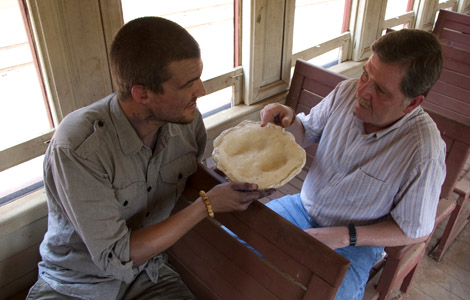
December 31, 2011
Top Ten Cryptozoology Stories of 2011
by Loren Coleman, Cryptozoologist, Author, Director, International Cryptozoology Museum
For over a decade, my year-end lists have reviewed the most popularly discussed or specifically remarkable media accounts and commentary. The tradition continues. Here we are again, at the end of December. It was quite a twelve months, and it finished with a bang.
1. Beast Hunter Premieres on NatGeo

Pat Spain asks David Oren about the footprint of a Mapinguari. Photo Credit: Icon Films
Cryptozoology on television kicked off the year with a unique treat. A new stage of scientific enhancement appeared with National Geographic Channel’s screening, beginning in March, of the program Beast Hunter. The new series featured 30-year-old biologist Pat Spain exploring on location the cryptid mysteries of the Orang Pendek, Mapinguari, Mokele-Mbembe, Cadborosaurus, and Mongolian Death Worm. Unfortunately, due to the surprise discovery of colon cancer for Spain, the series was cut short after the initial five episodes, although it may return after Spain’s treatment. (Read more here and here.) Sadly, Orang Pendek tracker Sadar Dimus, 46, who was also featured on Beast Hunter, died in 2011 (more here and here; plus “Top Ten Cryptozoology Deaths of 2011“).
2. Finding Bigfoot Becomes TV Cable Phenom
Animal Planet began broadcasting a new series, Finding Bigfoot on May 30th, about four hairy hominoid hunters searching for evidence of Sasquatch based on new and old sightings throughout North America. In essence, it was a project of the Bigfoot Field Researchers Organization that was made-for-television, starring Matt Moneymaker, Cliff Barackman, James “Bobo” Fay, and Ranae Holland.

During 2011, over the show’s six-episode first season, Finding Bigfoot captured an average of 1.2 million viewers in its Sunday night premieres, making it among the top three series on the Discovery-owned Animal Planet network (River Monsters and Whale Wars were the others). With repeated screenings, Animal Planet, by year’s end, had declared Finding Bigfoot their “number one” most watched program.
Observing the rising popularity of Finding Bigfoot from the beginning at Cryptomundo, the site became a forum for pro and con debates about Finding Bigfoot. Even Cryptomundo owner Craig Woolheater began merely numbering his postings as “findingbf-#” and, by December, had reached #58 when discussing 2012’s new Season Two. Doubtful blogger Sharon Hill pointed out in a fair-and-balanced assessment that the “success of the show” apparently had caused a “surge in the popularity” of the exclusively Bigfoot blogs (see here).
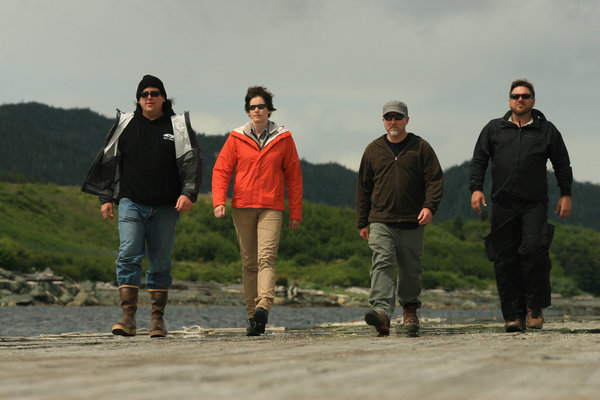
“There’s A Squatch” out in the woods or around your neighborhood became an instant viral catch-phrase.
3. DNA Dominates Bigfoot News
A secret Bigfoot research project, the Erickson Project, named after the wealthy Adrian Erickson, was the talk of many online blogs and forums during the year. It was a hush-hush affair about the collection of various Bigfoot body parts to be tested for DNA that was the source of a large amount of leaks. The news was confusing and often unreliable.
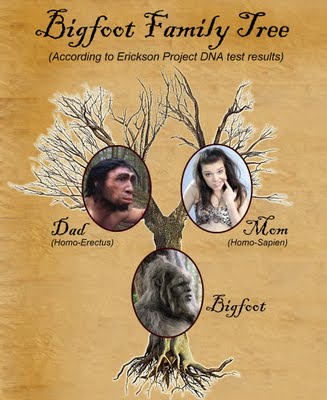
Chart Credit: Bigfoot Lunch Club
Dr. Melba S. Ketchum supposedly had sequenced Bigfoot mitochondrial DNA, finding it to be 100% human. Or has she? Stay tuned in 2012 for her peer-reviewed paper. Or not?
4. New Species Discoveries Abound
In a year of many new animals being discovered, one of the “celebrity new species” to be found was a new ferret-badger.

The species of ferret-badger (pictured above), previously unknown to western science, was secured in a national park in the central Vietnamese province of Ninh Binh. The animal, Melogale cucphuongensis sp.nov, belongs to the genus Melogale, which has four species – together known as weasels — and is mainly found in Indochina, Java, Bali, and parts of Borneo.
Other top discoveries included,
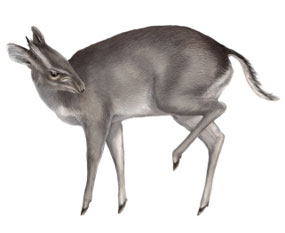
Credit: Yann Le Bris

a new Australian dolphin, and
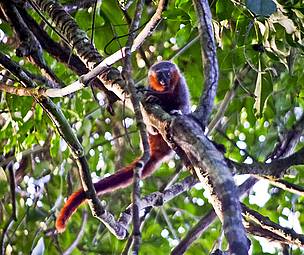
Credit: Julio Dalponte
5. Diverse Cryptid Sightings
Beginning at the start of 2011, as usual, mystery cat sightings were the first eyewitness accounts reported. For example, in February, the media in Louisiana publicized the encounters and alleged photos of melanistic large felids, so-called “Black Panthers,” on the prowl.
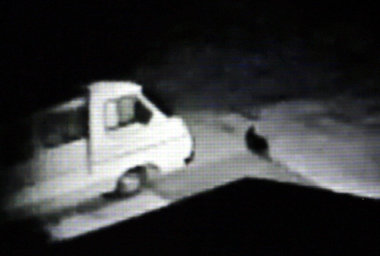
Folsom, Louisiana, resident Randy Davis was sitting at home in his equipment room on a late Saturday night in February when on his surveillance monitor he noticed a large cat walk across his asphalt driveway. On closer inspection, Davis thought the image was that of a Black Panther. Davis courtesy image.
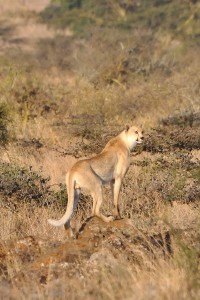
Credit: Guy Combs
Even io9’s special “Cryptid Summer” contest ended in September with a winner tied to mystery cats, in this case, the “White Cheetah.”
Of course, sightings of Bigfoot (for example in West Virginia) and the Loch Ness Monster (in Scotland) did occur. Furthermore, the Orang Pendek expedition in 2011 headed by Adam Davies may have more good news for 2012.
6. New Hominology Journal Announced
The year saw the announcement of a scientific, formal, peer-reviewed journal for hominology, The Relict Hominoid Inquiry.

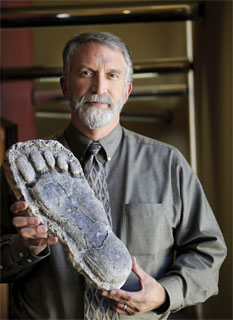
Jeff Meldrum, Ph. D., created the new journal.
The objective of the new publication will be to promote research and provide a venue for the dissemination of scholarly peer-reviewed papers evaluating the possible existence and nature of relict hominoid species around the world. A strictly on-line publication consists of a journal and biannual newsletter. The journal will contain primarily Research Articles with Commentary, as well as Letters & Responses, Brief Communications, Essays, News & Views, and Book Reviews. The webpage is hosted by the Idaho State University’s server with the cooperation and assistance of Instructional Technology Resource Center (ITRC).
7. Feds “Believed” in Yeti

In September, US News and World Report, somewhat incorrectly, flashed online an article noting, “Newly unearthed State Department documents confirm for the first time Uncle Sam’s belief that the Abominable Snowman roamed the mountains of Nepal in the 1950s, a finding that has shocked federal officials including the archivist who discovered the papers.”
Although the unclassified letters found by National Archive researcher Mark Murphy (who would be honored as “Cryptozoologist of 2011” for his work) were merely reporting on what was being thought by other governments, these documents were an important discovery. Once again, these turned out to be a new surprise from the 1957-1959 Tom Slick Snowman expeditions.
8. Pangboche Yeti Finger Found: DNA Tested
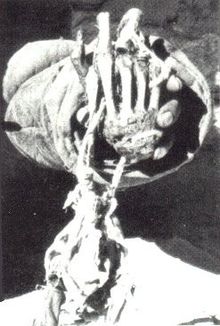
On December 27th, the BBC Radio 4 broadcast a program about how the Pangboche “Yeti Finger” brought back by the Tom Slick-F. Kirk Johnson Snowman Expedition of 1959 had been rediscovered. The whole story of Peter Byrne taking the finger, actor Jimmy Stewart putting it in his wife Gloria’s lingerie case, and transporting it back to Dr. W. C. Osman Hill in London unfolded.

Leading up to the BCC announcement, DNA results had been done and the results came back “human,” although further discussions of the results revealed that other tests needed to be run for further origin answers. Nevertheless, the story went global instantly, and interest was widespread. For example, Lee Speigel’s AOL/Huffington Post story of the “Yeti Finger” was so popular, Speigel told me, his report was accessed one million times within hours of being posted.
9. Siberian Snowmen Media Storm Ends With Russian “Female Yeti Captured”
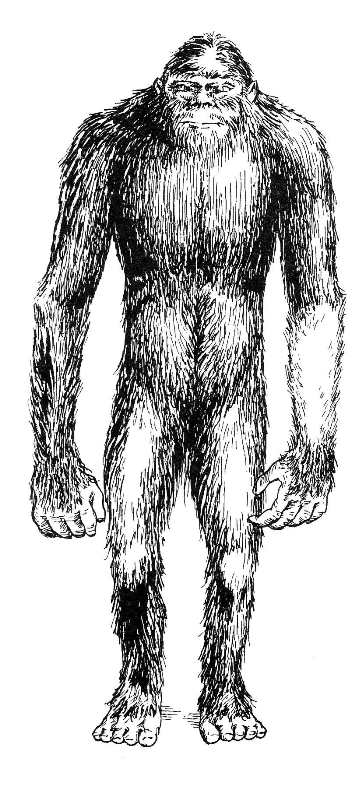
This Siberian Snowman was individually named Mecheny by the eyewitnesses. Credit: Harry Trumbore, in Loren Coleman’s and Patrick Huyghe’s The Field Guide to Bigfoot and Other Mystery Primates.
A new “Yeti Institute” in Siberia, a Siberian conference, and a new Siberian expedition were all in the news, and created a media storm about what did and did not happen with footprint finds, a nest being discovered, and possibly planted evidence. Huffington Post had a good overview, here.
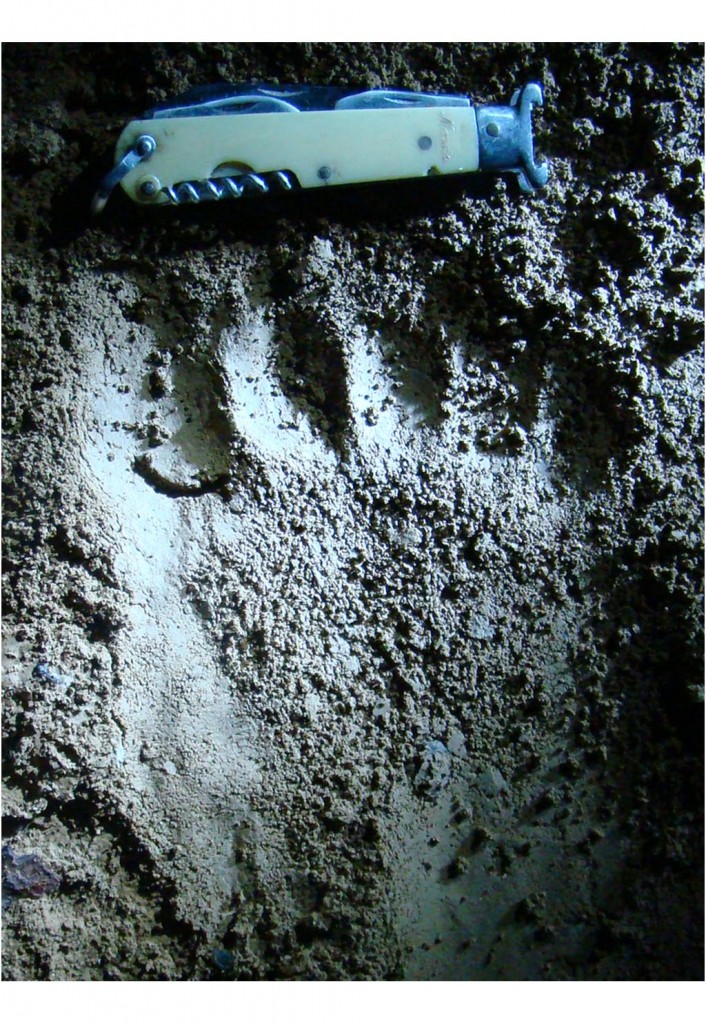
Footprint found in a Siberian cave.
Furthermore, other global gatherings were convened in British Columbia, the United States, and Belgium, during the year, which focussed on hominology and cryptozoology. Perhaps most noteworthy was the Zoological Society of London’s event on Cryptozoology of 12 July 2011.
Then, in December, allegedly, news came of a female Yeti caught in Russia’s Ingushetia Republic. However, film of the captive looked apparently like a Homo sapiens in a badly fitting gorilla suit.

10. Cryptozoology Museums On The Move
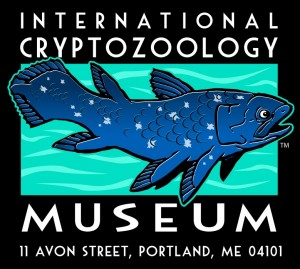
The International Cryptozoology Museum moved into a space that was five times as large as previously occupied, and became a nonprofit. Media attention continued, at an ever increasing pace, from the Boston Globe to Mysteries At The Museum, from Reader’s Digest to Yankee Magazine.
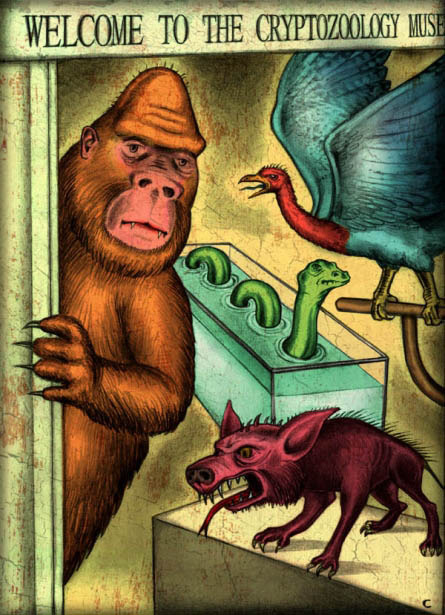
Meanwhile, in Germany, it was announced that, inspired by the American museum, a new cryptozoology museum (Deutsches Kryptozoologie-Museum, en abrégé : DKM) is scheduled to open in the spring of 2012 near Frankfurt.
About Loren Coleman
Loren Coleman is one of the world’s leading cryptozoologists, some say “the” leading living cryptozoologist. Certainly, he is acknowledged as the current living American researcher and writer who has most popularized cryptozoology in the late 20th and early 21st centuries.
Starting his fieldwork and investigations in 1960, after traveling and trekking extensively in pursuit of cryptozoological mysteries, Coleman began writing to share his experiences in 1969. An honorary member of Ivan T. Sanderson’s Society for the Investigation of the Unexplained in the 1970s, Coleman has been bestowed with similar honorary memberships of the North Idaho College Cryptozoology Club in 1983, and in subsequent years, that of the British Columbia Scientific Cryptozoology Club, CryptoSafari International, and other international organizations. He was also a Life Member and Benefactor of the International Society of Cryptozoology (now-defunct).
Loren Coleman’s daily blog, as a member of the Cryptomundo Team, served as an ongoing avenue of communication for the ever-growing body of cryptozoo news from 2005 through 2013. He returned as an infrequent contributor beginning Halloween week of 2015.
Coleman is the founder in 2003, and current director of the International Cryptozoology Museum in Portland, Maine.
Filed under Breaking News, Cryptomundo Exclusive, Cryptotourism, CryptoZoo News, Cryptozoologists, Cryptozoology, Top Ten, Year In Review